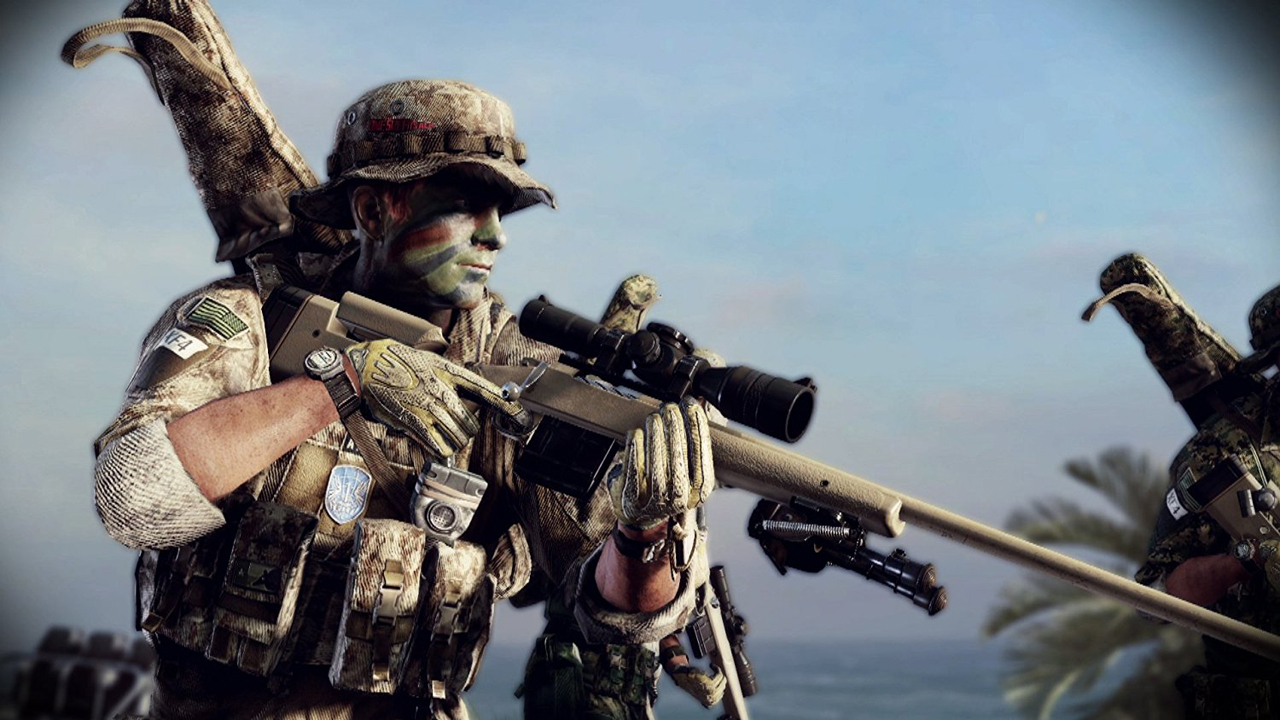The new Call of Duty may have revived the WW2 shooter... but here's the fascinating story of how Medal of Honor defined it
It's all thanks to Steven Spielberg, a harsh military advisor, and Nazis posing with snowmen

When not in the director’s chair, Steven Spielberg could be found in the pilot’s seat. His aircraft was not made of aluminium but, like the world beyond the cockpit windows, pixels and computer-generated polygons. And Spielberg had logged countless hours in the virtual skies. A frequent flyer in Microsoft Flight Simulator, a master at MechWarrior, Spielberg loved video games in the late ‘90s. And at the time he had a video game company of his own to play with. DreamWorks Interactive (DWI) was the gaming division of DreamWorks SKG, a multi-media corporation resulting from Spielberg’s titanic partnership with Jeffrey Katzenberg and David Geffen.
For DWI employees, having renowned filmmakers as bosses had its advantages. “One of the benefits to having the DreamWorks banner,” explains DWI veteran Matt Hall, “was that it opened doors to places most people might have difficulty going, like NASA, or [Hollywood armorer] Stembridge Arms.” Other perks included parties, movie screenings, and passes for Universal Studios amusement park. It was a unique and creative place to work. Sunil Thankamushy, who started at DWI as an intern, describes it as “a culture of dreamers inspired by Spielberg, making games. We did not see ourselves as hardcore game developers.”

“This was not just a Wolfenstein-like shoot-up-the-Nazis game. This was going to be a fun but authentic experience.” Sunil Thankamushy, DWI
Early on, these dreamers produced The Neverhood as well as some Jurassic Park titles and point-and-click Goosebumps adventures. Yet one game was having trouble getting off the ground. Codename ‘Normandy Beach’, the brain-child of Noah Falstein, was a project that made people nervous. WW2 was considered a dead genre back then, with players far more interested in futuristic and fantastical settings than the depressingly-real battlefields of the past.
The period was a favourite of Spielberg’s, however, and in late 1997, during post-production on Saving Private Ryan, he proposed a new WW2 project during a meeting at DWI.
“The idea of making a WW2 game took everyone completely by surprise. Initially, we were pitching an idea for another Jurassic Park game,” says Lynn Henson, one of the project’s two Lead Designers. “So we pitched an idea about Jurassic Park to Spielberg. He listened to the whole thing and very kindly recommended that we have some other studio do that… That's when Spielberg told us what he'd like to play.” And that was a period action game he was calling Medal of Honor, after America’s highest military award. “We were understandably excited because I don't think anyone was really that jazzed about the Jurassic Park idea,” Henson admits.
The birth of a behemoth
The setting was not Spielberg’s only gamble. Inspired by playing GoldenEye 007 on the N64, he wanted to realise his concept as a first-person shooter. But DWI developed games for the original PlayStation, a platform on which the FPS was considered ill-suited due to its (then) lack of analogue control sticks. But for Animation Director Thankamushy, the console represented an opportunity: “PS1 was new, we thought it was cool, and it needed the definitive first-person game. And we wanted to make it.”
Spielberg’s final directive was that the game be authentic. As Thankamushy sums it up, “It would be true to history, it would have a sense of realism, and it would honour the American GI of WW2.”
Weekly digests, tales from the communities you love, and more
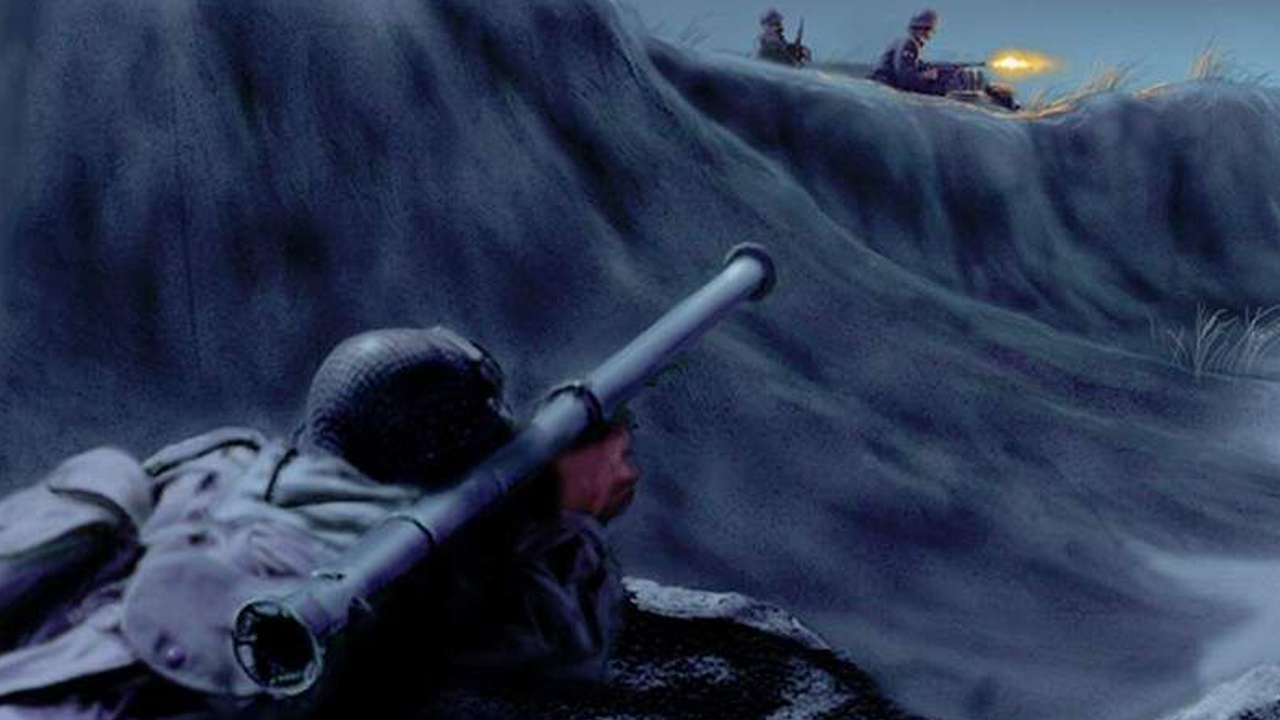
Tasked with bringing this innovative project to fruition was Writer and Producer Peter Hirschmann. “Peter was awesome,” enthuses Lead Designer Chris Cross. “It was just great to work with somebody that early in my career that was focused on gameplay and quality like he was. A lot of the cooler features in the game came from him. He was a huge WW2 buff.”
“He had a very strong vision for this game and very high standards,” describes Hall, the game’s Art Director. These were standards the team worked hard to meet.
“We were very sincere in our wanting to make [a] great game,” says Thankamushy. “This was not just a Wolfenstein-like shoot-up-the-Nazis game. This was going to be a fun but authentic experience.”
I played Medal of Honor for the first time 18 years after its initial release. It opens with a compelling introduction to WW2 narrated by Dale Dye, a retired army captain who served as the game’s military advisor. After navigating a very cool main menu and glimpsing some of Matt Hall’s terrific propaganda-inspired load screens, I begin my seven-mission campaign.
“Each mission had three levels,” Henson states. “This came from an idea that Capt. Dye had told us about mission planning. There is an infiltration, a mission execution, and then an exfiltration. So building upon this, I started designing missions with three levels.”
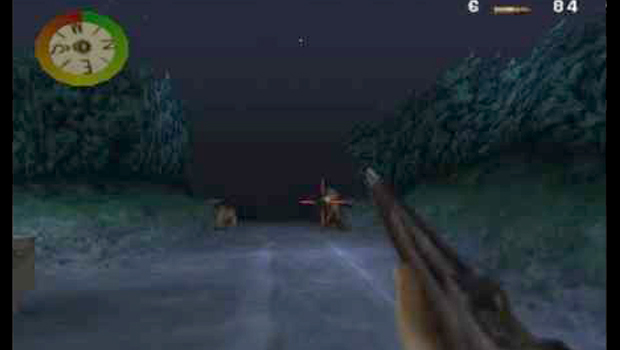
The first mission begins in France in June 1944 where I meet my avatar James Patterson, an agent of the Office of Strategic Services. He is confused and struggling to walk, due not to any injury or hallucinogen, but to the sheer difficulty of the controls. “We had to design the whole game to be playable with only the D-pad,” Cross explains. It wasn’t yet known how popular Sony’s new Dual Analog controller would prove to be. Medal of Honor had to work without sticks. “Part of the reason that the default controls for the Dual Shock are a little strange is how they mapped to the D-pad. Strafe was up on the shoulder buttons (L1,R1).” For the modern player, it takes some getting used to.
Once Patterson figures out how to turn corners, he can get on with his first task - rescuing an officer from an occupied French town. From there, Patterson goes on to tackle the gigantic railgun Greta, sink U-4901, penetrate Fort Schmerzen, infiltrate a Norwegian hydroplant, save treasures hoarded in the Altaussee salt mine, and destroy a V2 rocket facility.
Undercover missions, in which Patterson must disguise himself as Wehrmacht and Kriegsmarine officers, complement more typical levels of head-on destruction. It’s an eclectic mix that ensures the game never gets stale. Play well and Patterson is awarded the Medal of Honor, a rewards structure that adds to the game’s replay value. As does the split-screen multiplayer option.
The (lack of) power of PlayStation
Achieving all of this was not easy. GoldenEye’s developers had enjoyed 4 MB of RAM on the N64, whereas the DWI team could rely on half that for their PlayStation release.
“We made the best with what we had,” says Lead Artist Dmitri Ellingson. “We knew from the start that we would never be able to truly replicate a location, so we tried our best to capture the look and feel in the best way we could with the limiting capabilities of the PS1 platform.” Ellingson’s issues included “texture memory, 4-bit palettes, and not having hardware texture perspective correction.”
“Every mission was set at night or inside,” Cross relates. “This was intentional since we couldn’t do sky boxes as part of our memory limitation.”
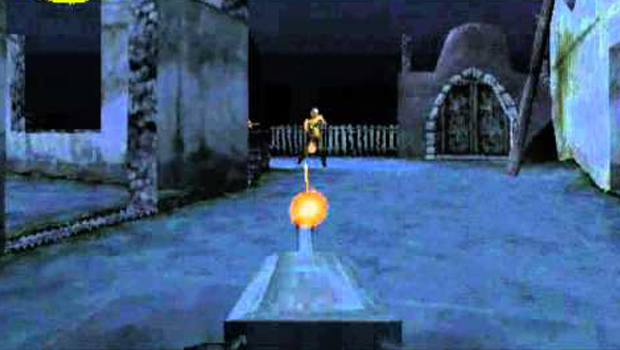
"I feel sad for those poor NPCs holding their weapons… with big, blobby, stumpy hands" Sunil Thankamushy, DWI
Only four non-player characters (NPCs) could be visible at any one time. “We came up with a lot of spawning techniques to fill areas with more enemies without going over our four AI budget,” says Cross. Chain spawning, on-death spawns, and group spawns were all utilised. “Our levels were split into compartments and were dynamically loaded based on player location. This also played hell on our spawn triggers. We had to un-spawn AI characters and make sure that we spawned them if the player backtracked.”
The low polygon count also had an impact. “To this day I feel sad for those poor NPCs holding their weapons… with big, blobby, stumpy hands,” says Thankamushy. “What I would do to give them at least a trigger finger.”
The behaviour of the NPCs, however, is one of the game’s most impressive features. Locational damage means that enemy soldiers react differently depending on which part of their body takes a bullet. If I hit them on the head, their helmets fly off. They’ll run for cover, race for an alarm, roll out of the line of fire, kick a grenade back at me, or throw themselves on one to protect their countrymen. During the undercover levels, guards stop me to check my papers, letting me through if I have the right documents, or turning me away if I don’t.
There was no motion capture. “What we did,” explains Thankamushy, “was take lots of video reference of ourselves doing the various moves.”

“Spielberg was tickled to bits seeing the complex level of hit and death reactions and NPC behaviours,” Thankamushy recalls. “Seeing his reactions, we just kept going at it and in the end we had over 450 animations on the NPCs.” It was quite a feat for the time.
“One of the game design features I liked,” remarks Ellingson, “was when the German Shepherds would fetch the grenades.” It was an idea contributed by Spielberg himself. “He had a great design sense.”
I even find AI characters using the loo, or stood around a snowman they have built. “These were put in the game to show that the enemies lived there as opposed to just being animated cardboard targets,” says Cross. “We wanted the player to feel like they were in a place that the AI was living in.”
The visuals are accompanied by atmospheric ambient sound effects and an outstanding orchestral score by the future Academy Award-winner Michael Giacchino. Performed by The Northwest Sinfonia, the exciting, memorable themes are on a par with anything Giacchino has composed recently. The music has not aged a day.
The story untold
What the game does lack is an overarching storyline. “I tried very hard in the design documentation phase to tell some kind of a story,” explains Henson, “but ultimately I had to accept that there was just no room for it. We barely had enough memory to cram in what we did and have it run at 30fps.” When given the choice between story and gameplay, Henson says, “We chose gameplay.”
For Cross, self-contained missions worked in the game’s favour: “We wanted to parallel the big events of the war and let that storyline drive the game.” By not being a slave to narrative or having one omnipresent villain, they could locate levels wherever they wanted and represent many differing aspects of the war, no convoluted explanations necessary.

“Most of the missions were based on actual events in WW2, but we were very playful with it. It needed to be fun too.” Sunil Thankamushy, DWI
There are also no animated cutscenes, further diluting the sense of a narrative. Although one was designed by Jurassic Park storyboard artist David Lowery, it was abandoned due to time, budget, and available manpower. Besides, Cross argues, “Pre-rendering cutscenes seemed cheesy at the time and less immersive.”
I don’t miss them. In their place, there are a series of mission briefings made up of slideshow presentations given by the off-screen Colonel Hargrove, voiced authoritatively by Morgan Sheppard. These do an effective job at setting up each mission and feel appropriately of-the-era.
In addition, I am guided through each level by written instructions from Patterson’s contact within the French Resistance. Though Manon’s ability to omnisciently advise Patterson in the midst of battle is somewhat implausible, her directions are clear and infused with personality. It is this text that provides the bulk of the threadbare character development, with details of Manon’s past and Colonel Hargrove’s growing fondness for Patterson sprinkled in.
Also included is educational material in the form of faux newsreels related to the content of each mission. The archive footage is brilliant and, though short, the segments introduce viewers to the importance of the Stuka dive bomber, the Me 262, and more. Narrated by Sheppard rather than Dye, they blur the line between fact and fiction.

Of course, training people to trust a video game is like using Braveheart in school history lessons. But DWI was first and foremost creating a piece of entertainment, not a reconstruction. “Most of the missions were based on actual events in WW2,” says Thankamushy, “but we were very playful with it. It needed to be fun too.” The aim was for authenticity rather than accuracy.
It was Spielberg’s idea to recruit Dale Dye to consult on the project. Henson remembers the Vietnam veteran as “reluctant at first. I think he viewed video games as a waste of time. But after he saw what we were trying to build, I remember him saying that if this was how children today could learn about such an important event in history, then he would help us out wherever possible.”
“We all went out for paintball with Capt. Dale Dye,” says Ellingson. “He had the teams perform squad tactics and manoeuvres that would have been utilised in WW2.”
“I had a dozen small notebooks… of the lectures he gave us,” Thankamushy reminisces, also recalling how Dye would punish his students for their mistakes. Ike Macoco, from the Engineering Team, had to “do push-ups in the hot sun in the desert during a particular training because he accidentally called a weapon a ‘gun’.”
The weaponry James Patterson employs are real relics of the era. “Thanks to Capt. Dale Dye, we had experience firing most of those weapons,” Thankamushy explains. “The one part that the designers would not let animators make too realistic was reload times. We originally had animated the reloads faithful to reference videos, but the designers found it too time-consuming from a gameplay standpoint.”
Outside influences
The project was nearing completion when outside events forced a rethink on its depiction of blood. “The Columbine school shootings happened,” remembers Thankamushy. “The media was all up-in-arms against violence in video games. Given the horrific tragedy, the team did lots of soul-searching, there were lots of debates, discussions with the publisher, the studio, amongst team members.”
“After the school massacre,” says Henson, “there was very heavy pressure on us to get the T rating for our game. Prior to that, everyone was on board to make an M-rated game.”
It was originally a gory experience. Ellingson states, “When a character was shot with the bazooka, only the legs and lower torso remained after the explosion. It was a bit gruesome.” Indeed, Max Spielberg, the filmmaker’s son who did testing on the game, later told Edge magazine that some of the animation was “more fitting for an Evil Dead movie than Medal of Honor”.

“The Congressional Medal of Honor Society had issues with a video game in which the player could ‘win’ the Medal of Honor.” Dmitri Ellingson, DWI
Eventually, it was decided that Medal of Honor’s battles would be bloodless.
“I personally think it was a good decision and focused the gameplay on the mission, and not the misery,” says Thankamushy.
“Many of the WW2 films we studied did not have blood spraying from every character that was hit,” Ellingson remarks, “so we decided to omit it from the game and once we did, we thought it was better without it.”
It was a commercially helpful decision, too. “After we'd committed to making a Teen-rated game, retailers were actually thanking us,” says Henson.
It was not the only late-in-the-game issue. “We almost were not able to call it Medal of Honor,” remembers Ellingson, of a hiccup that could have seen the game pulled from release. “The Congressional Medal of Honor Society had issues with a video game in which the player could ‘win’ the Medal of Honor.” The Society argued that the medal was not won but earned, a fact which Ellingson says the team “made sure we reflected in the game”. Such was the integrity of the project and the intentions of the team that the Society actually ended up endorsing it.
Medal of Honor was released in October 1999, marketed as “the only game that lets you take on Nazis in WW2”. Published by Electronic Arts, it was a commercial victory.

Reviews were also glowing. Some critics did have reservations about the quality of the graphics, but the AI characters, along with the music and sound design, were deemed extraordinary. “GoldenEye for the PlayStation has finally arrived,” cheered IGN, awarding the game 9.3/10. “The closest thing you’re going to get to GoldenEye 007 on the PlayStation,” echoed GameSpot.
Spielberg’s gamble on an authentic, WW2-set PlayStation FPS had paid off. This was a game which would lay the groundwork for all WW2 games to come.
And how was the DWI team rewarded for its efforts? The division was sold to Electronic Arts. The decision had been made to jettison the fledgling studio before Medal of Honor’s release. It was, Spielberg told Reuters in 2009, “the smartest and dumbest thing I ever did.” He went on: “Had we not sold, we would have been able to stay in business just based on the success of Medal of Honor.”
The legacy of Honor
The game spawned 13 further instalments. The franchise’s fortunes could in part be put down to the budgets and muscle Electronic Arts was able to bring to bear (the “smart” aspect of Spielberg’s equation). But for staff members like Cross, the sale of DWI meant that “the dream was ending and the real world was about to crash in”.
Not that anyone was bitter. Indeed, DWI veterans take pleasure in the memory of the Medal of Honor experience and their time spent with Spielberg. As Hall recollects, “The cool thing was that he [Spielberg] came back to the studio after the EA transfer and handed each team member their bonus cheque. That gesture alone meant so much after working so hard on that game. We were proud of what our little team had accomplished.”
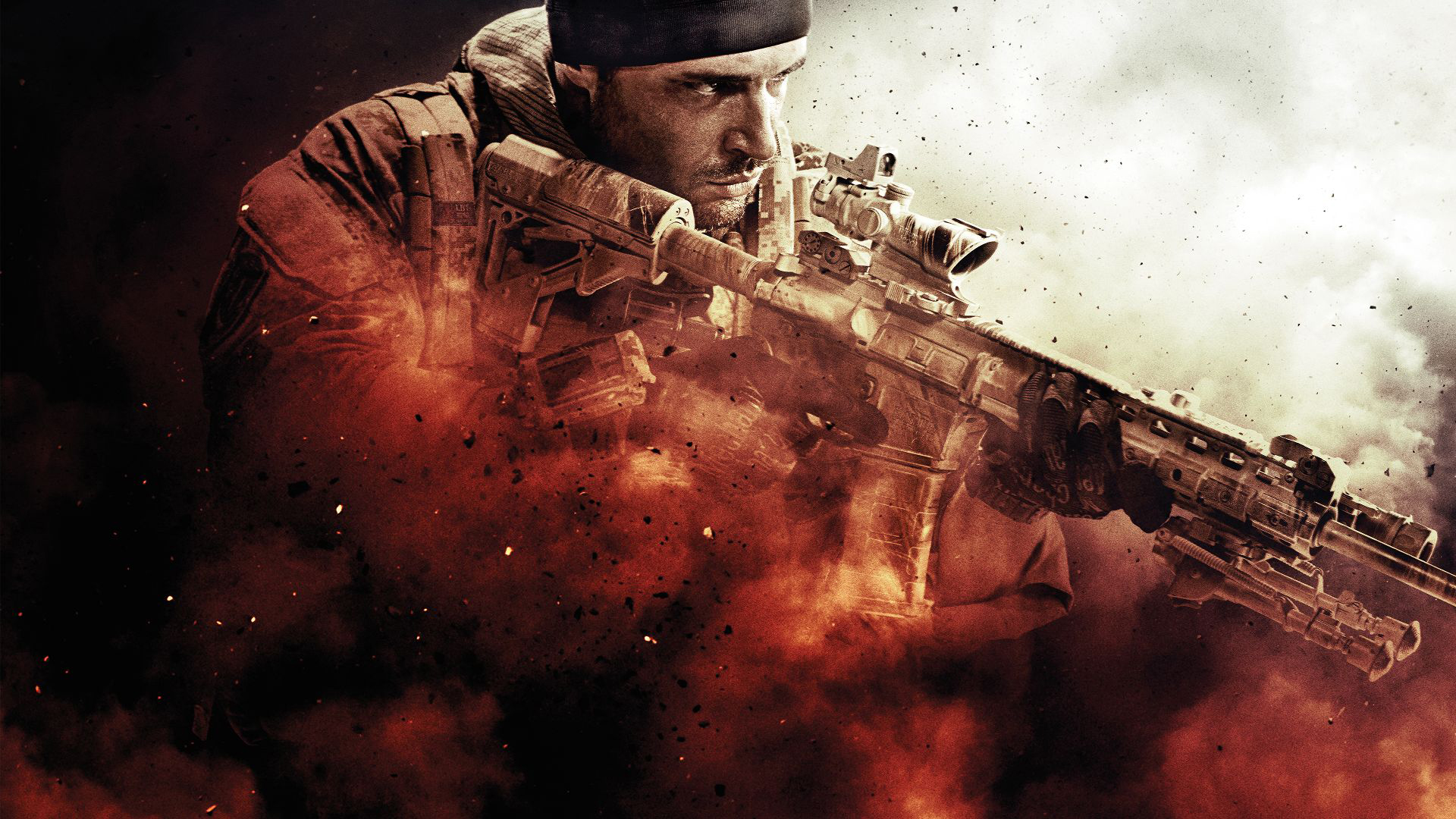
DWI lives on today as DICE Los Angeles, but Medal of Honor is not to be found on its development slate. The long-running series ended with a whimper in 2012 with EA deciding to give the title “a rest while we plan its return”.
With the release of Call of Duty: WW2 on the PS4 and Xbox One, perhaps interest in resurrecting the original PlayStation WW2 title will increase.
“EA has a reputation for being the place IPs go to die,” says Cross, who isn’t optimistic.
“I think the best way back would be to return to the original spirit of the franchise,” offers Hall. After Pearl Harbor, “there was a legitimate sense that we were fighting real evil and for a good cause. The original games tapped into this spirit of patriotism and passion – the attitude that one soldier can make a difference in the outcome of the war. It was a celebration of that generation in a way, embodied in a character named Jimmy Patterson.”
But for Henson, the answer is simple: “I'd say make something new. How can we as an industry be out of ideas already?”
